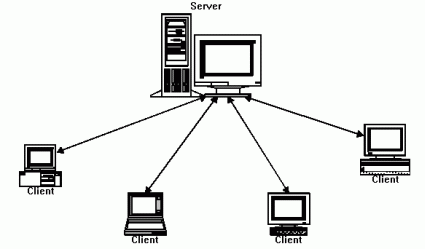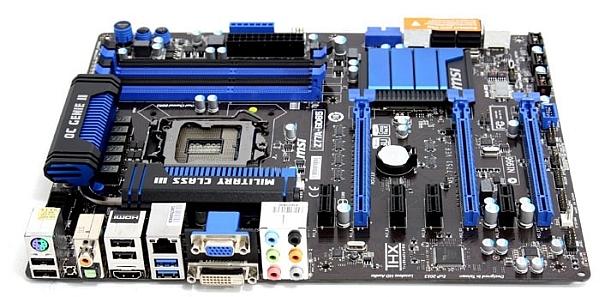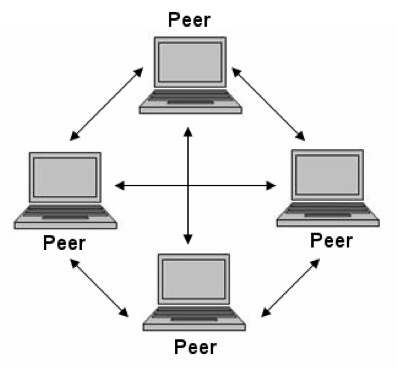Definition of network architecture:
- Network architecture is the way network are designed to communicate
Type of network architecture: 1. Peer-to-peer architecture- Definition
- A network model in which all computers can function as clients or
servers as needed and there's no centralized control over the network
resources.
- Most computers functions as clients or servers.
- Example:
A computer can act as a server by sharing a printer it's connected to
and at the same time act as client by accessing a file shared by
another computer on the network.
Perr-to-peer Network Diagram
Advantages of peer-to-peer network:
- Less startup cost to setup the network architecture-no need for a server
- Easy to install and configure for the computers in the network.
- When a peer fails it will not affect the other peers so the network is reliable.
Disadvantages of peer-to-peer network:
- Decentralized - No central repository for files and applications
- Less security - Does not provide the security available on a client/server network.
- Every user is taking care his/her own machine.
2. Client-server network
- Definition
- Network in which one or more computers act as a server and the other
computers (clients) on the networks request services from the server.
CLIENT-SERVER NETWORK DIAGRAM

- Computers connected together to create a network which fall into two categories : clients and server
| The Client | The Server |
| Computer and mobile devices on a network that requests resources from the server. | Computer
that controls access to the hardware, software and other resources on a
network and provides a centralized storage area for programs, data and
information.
Note: Server can be a mainframe computer used in a network environtment. |
Advantages of client/server architecture:
- Centralized - Resources and data security are controlled through the server.
- Scalability - Adding or removing resources in the network can be easilly done by configuring the server.
- Better management of files - All files are stored in the server.
- Accessibility - Server can be accessed remotely and across multiple platforms including Windows, Linux and Mac OS.
Disadvantages of a client/server:
- Expense - Requires initial investment in dedicated server.
- Maintenance - Large networks will require a staff to ensure efficient operation.
- Dependence - When server goes down, operations will cease across the network.
Peer-to-peer vs client/server network:
| Client server | Peer-to-peer |
| Computer/nodes request services from the server | Each individual computers act as both the service provider and the service consumer |
| software installation in the server only | Software installation for all computer |
| Easy to manage the resources in the network (server existence facilitate the distribution of the resources) | Difficult to manage the resources in the network |
| Higher cabling cost | Less cabling cost |
| Security control by server (centralized) | Security control by their own |



